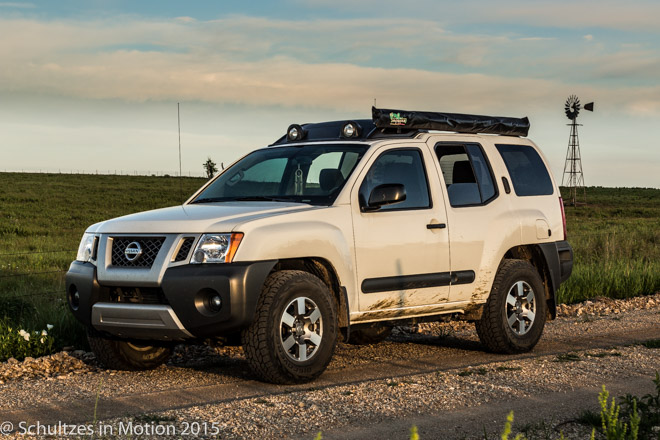Exploring Our Own Backyard – A Day in the Kansas Flint Hills
While riding our motorcycle around in New Mexico last weekend, Laila and I were admiring the beauty of the North Eastern New Mexico landscape along with enjoying the flat out stunning food that is New Mexican cuisine.
We began to wonder if people who live there realize what an amazing place they live in. Do they bother to go see all the things that are there or do they take it all for granted? Well… On our way back home to Kansas City, we realized that we probably do the same thing and wondered what is it about where we live that we are missing.
As it turns out, one of those things we were missing is called “The Flint Hills”. We’ve passed the sign so many times on I-70 going to and from Colorado but never really bothered to investigate more closely. We decided to change that.
This area of Kansas is truly beautiful. No, there are no snowcapped peaks or cliffs for us to imagine climbing but there are beautiful green rolling hills, a LOT of American history and the only real native tallgrass prairie left in the United States. This section of Kansas looks largely identical to what the settlers would have seen when crossing it so long ago.
The Flint Hills is a large range of hills that stretch from North Central Kansas all the way down to North Central Oklahoma. The pervasive flint just below the surface of the soil thankfully rendered the ground unsuitable for plowing. Because of this, along with the very low population density in the area, we have the native tallgrass prairie perfectly preserved. Large ranches raising either cattle or horses cover the area and we crossed several areas of open range (NO FENCES), we agreed that these were our favorite sections of road. One menacing group of cows tried to block our path across a bridge however we eventually convinced them to let us pass.
While traveling we encountered new plants and birds that we have never seen just 80 miles to the east at our home near Kansas City. I think our favorite was the Sandpiper, neither of us had seen one of these birds before. Apparently they require high quality prairie conditions so we were lucky to see one.

One somewhat odd scene that we encountered was a fairly new house that had several vultures relaxing on the roof. Had the house been older we would have definitely assumed it was haunted. Maybe it was?
There were also a few very small towns along our path, most of which were declining in population. All through the Midwest we have noticed that the older small towns are often nearly empty. It is apparent that these communities were often self contained with a variety of stores on main street however many of the small towns we encounter here now have a few residents that are hanging on and main street is primarily a ghost town with perhaps a local church and maybe an antique shop struggling to exist.
Our Sunday trip officially started and ended in a small town called Cottonwood Falls, Kansas. Cottonwood and Strong City are neighboring towns and combined have a population of 1500, this is 50% of the entire population of Chase County. From Cottonwood we left pavement and would not see it again for about 100 miles.
Our route took us through many of the dirt roads in Chase County Kansas, I would have to go back and look at our exact route but I do not believe that we ever actually left Chase County at all. There are many more counties that comprise the entire Flint Hills area. We have downloaded all of the maps for these counties from the Kansas State website and plan to make return trips this year both in the XTerra and on motorcycle.
We had a fantastic day exploring our own backyard, in fact we ended up staying far later than planned and eventually ran out of light.










